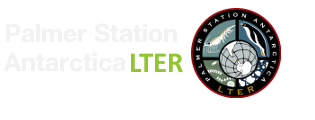
 This site was developed with the support of the National Science Foundation under Grant No. OPP-2224611 and OPP-2026045. Any opinions, findings, and conclusions or recommendations expressed in this material are those of the authors and do not necessarily reflect the views of the National Science Foundation.
This site was developed with the support of the National Science Foundation under Grant No. OPP-2224611 and OPP-2026045. Any opinions, findings, and conclusions or recommendations expressed in this material are those of the authors and do not necessarily reflect the views of the National Science Foundation.
Logistical support for this project in Antarctica was provided by the U.S. National Science Foundation through the U.S. Antarctic Program.
Rutgers University is an equal access/equal opportunity institution. Individuals with disabilities are encouraged to direct suggestions, comments, or complaints concerning any accessibility issues with Rutgers web sites to: accessibility@rutgers.edu or complete the Report Accessibility Barrier or Provide Feedback Form.

New Paper on marine debris found near Palmer Station
Looking Forward: The Race to Save Antarctic Penguins
Joy Ferenbaugh appointed Assistant Professor
Upside Down Ocean: Unraveling the Crisis of Antarctic Sea Ice
New Paper: 60 years of glacial retreat behind Palmer Station
Fast Company on the Five-Sigma Event
Associated Press: Antarctic Krill Fishing
Lightning Talk on Palmer LTER Science
Palmer penguins featured on WHYY’s The Pulse
New Paper: Remote sensing of sea surface glacial meltwater on the Antarctic Peninsula shelf
New Paper: Influence of seasonally varying sea-ice concentration and subsurface ocean heat
New Paper: Krill body size drives particulate organic carbon export in West Antarctica